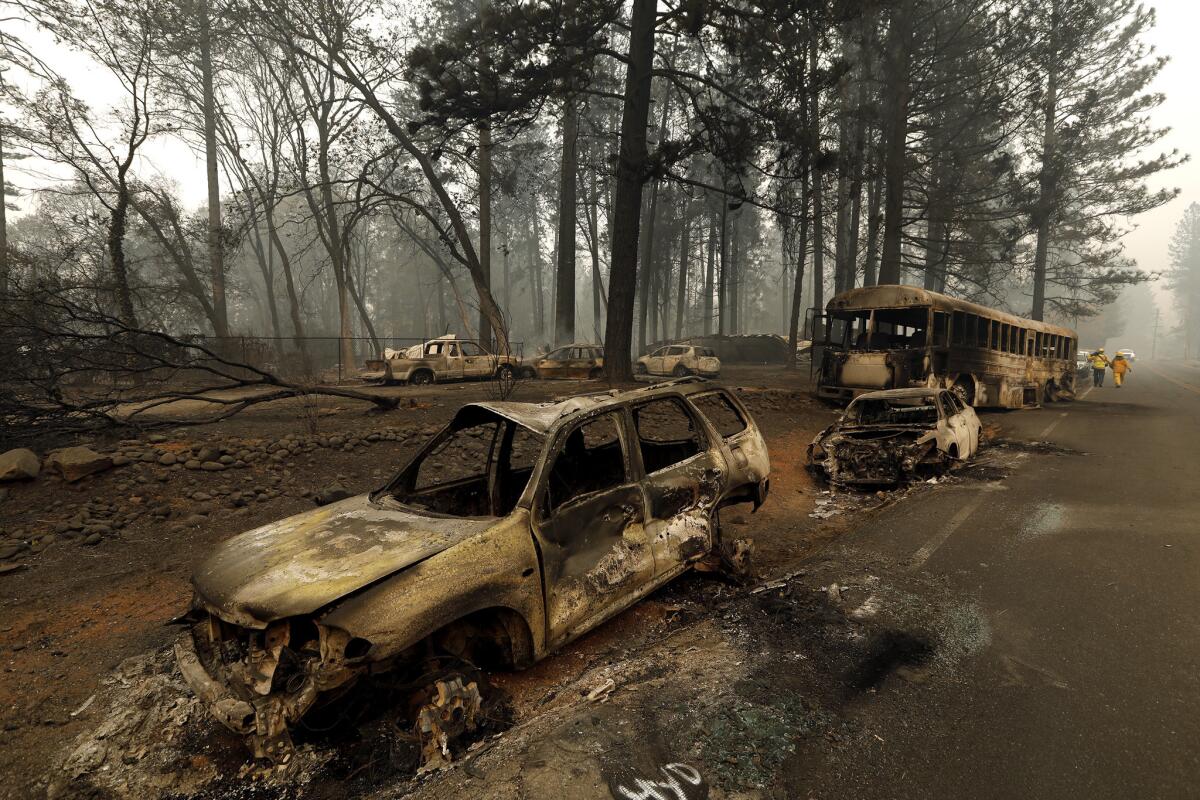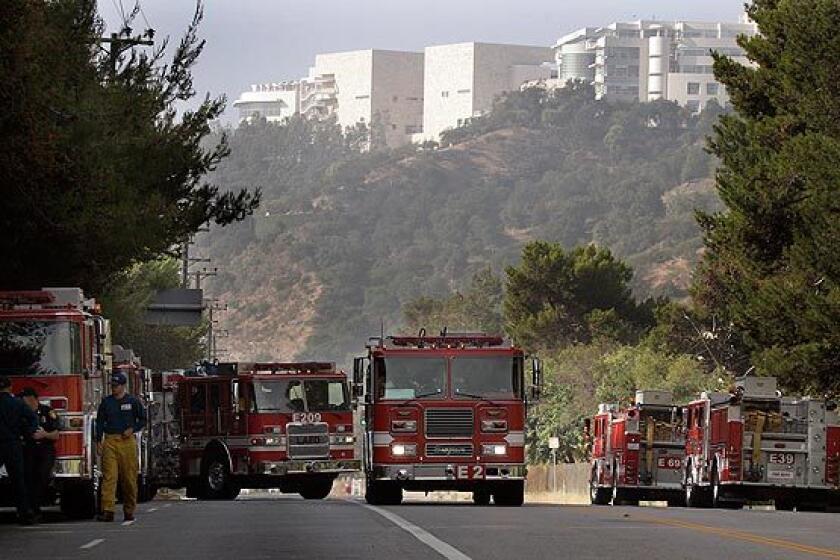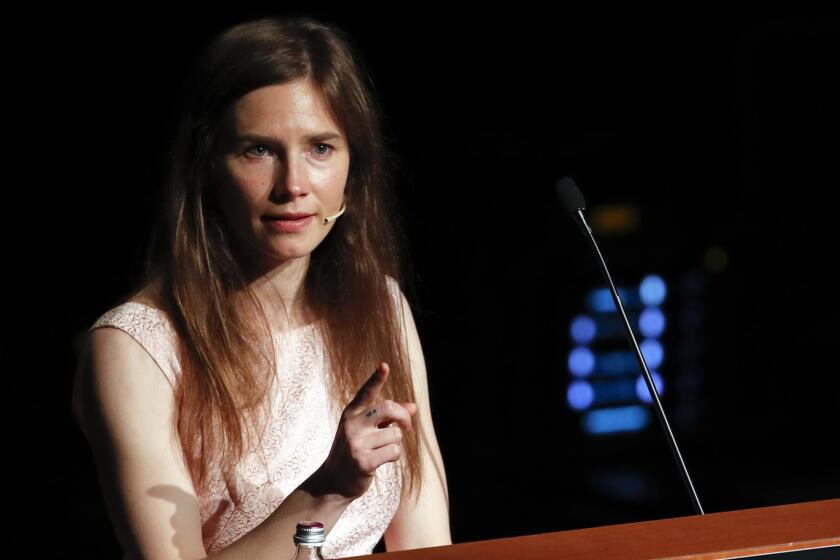In new films on California’s deadliest wildfire, the fearsome future is now
- Share via
Even as the Kincade fire continues burning south through Sonoma County, and the Getty fire rages alongside the 405 Freeway, two documentaries come to television to mark the anniversary of the Nov. 8, 2018, Camp fire, the deadliest wildfire in California history. Each is titled “Fire in Paradise,” confusingly, after the town that fire turned to ash. (The fire itself was named for the road where it started.)
The Getty fire poses a threat not just with flames but also with smoke, which can damage artworks. But the museum says its paintings are protected.
Title and subject aside, there is remarkably little overlap between the two. The first, which premieres Tuesday as part of the PBS investigative series “Frontline,” is a fact-filled, narrated hour that both dramatically recounts the progress of the fire and attempts to come to grips with its greater and lesser causes, human and natural (and nature as altered by humans). The Netflix film, a documentary short premiering Nov. 1, is more experiential, more consciously evocative, a kind of group diary of the fire and its aftermath. Watching one is not an argument against watching the other, unless there are only so many harrowing stories of being trapped in an uncontrollable inferno (and so much cellphone footage of it) you are able to take. Both are nerve-wracking.
The speed with which the fire moved caught services and residents off-guard, compounded by old models of how fire behaved. What seemed at first remote and routine was suddenly immediate, everywhere, unpredictable, overwhelming. Emergency warning systems failed. The few roads out of town became impassible, first from traffic, then from fire. As with other disaster stories in which man and technology come up against nature, Nov. 8, 2018, was a day of of misread signs, poor communication, bad decisions, collapsing infrastructure and good ideas never implemented.
Both documentaries tell tales of survival and selflessness. Some stories end badly. (Those watching the Netflix film should be on the alert for gruesome footage from a citizen journalist. You will know when it’s coming.) But more do not. Given all that went wrong, it’s astonishing that more people didn’t lose their lives that day. (Eighty-five did.) The “Frontline” documentary goes at length into how procedures failed, but tens of thousands made it out, or made it through, despite the late warnings and obstacles.

The “Frontline” documentary gives you broader context and something like a villain — Pacific Gas & Electric, whose century-old electricity tower caused the spark that set the fire in the first place; the utility, which recently filed for bankruptcy protection, has a history of safety violations and an “if it’s almost broke, wait to fix it” regard for its equipment. (“If they were an individual and not a corporation,” says Russell Gold, a Wall Street Journal reporter, who has written of the company’s maintenance record, “I think by now they would be in prison.”)
Made by the team of Drea Cooper and Zackary Canepari (the excellent “Flint Town”), the Netflix film is more a portrait than an investigation, albeit a portrait of a community not quite ready to sit for one. (There are nervous laughs, awkward pauses.) As elsewhere, the directors’ work has a high-style look to it, both in the interviews and the scenes where survivors return to the remains of places they lived and worked. It can feel a little fancy, given the subject matter, but it’s respectful as well.
What happened then is not distinct from what is happening now, of course; these are films not merely about past events but implicitly also about the future and the fires to come. (Indeed, we’re living that future now.) Climate change, which is making fires bigger and more frequent — 10 of the state’s 20 most destructive fires, we’re told, took place in the last four years, not counting the contender currently raging up north — gets the credit it’s due.
One firefighter in the Netflix film recounts how he would say to his wife after these super-fires, “This is unprecedented.”
“Finally she told me, ‘I think you have to stop saying that.’”
‘Frontline: Fire in Paradise’
Where: KOCE
When: 10 p.m. Tuesday
Rating: Not rated
‘Fire in Paradise’
Where: Netflix
When: Any time, starting Friday
Rating: TV-MA (may be unsuitable for children under age 17)
More to Read
The complete guide to home viewing
Get Screen Gab for everything about the TV shows and streaming movies everyone’s talking about.
You may occasionally receive promotional content from the Los Angeles Times.








